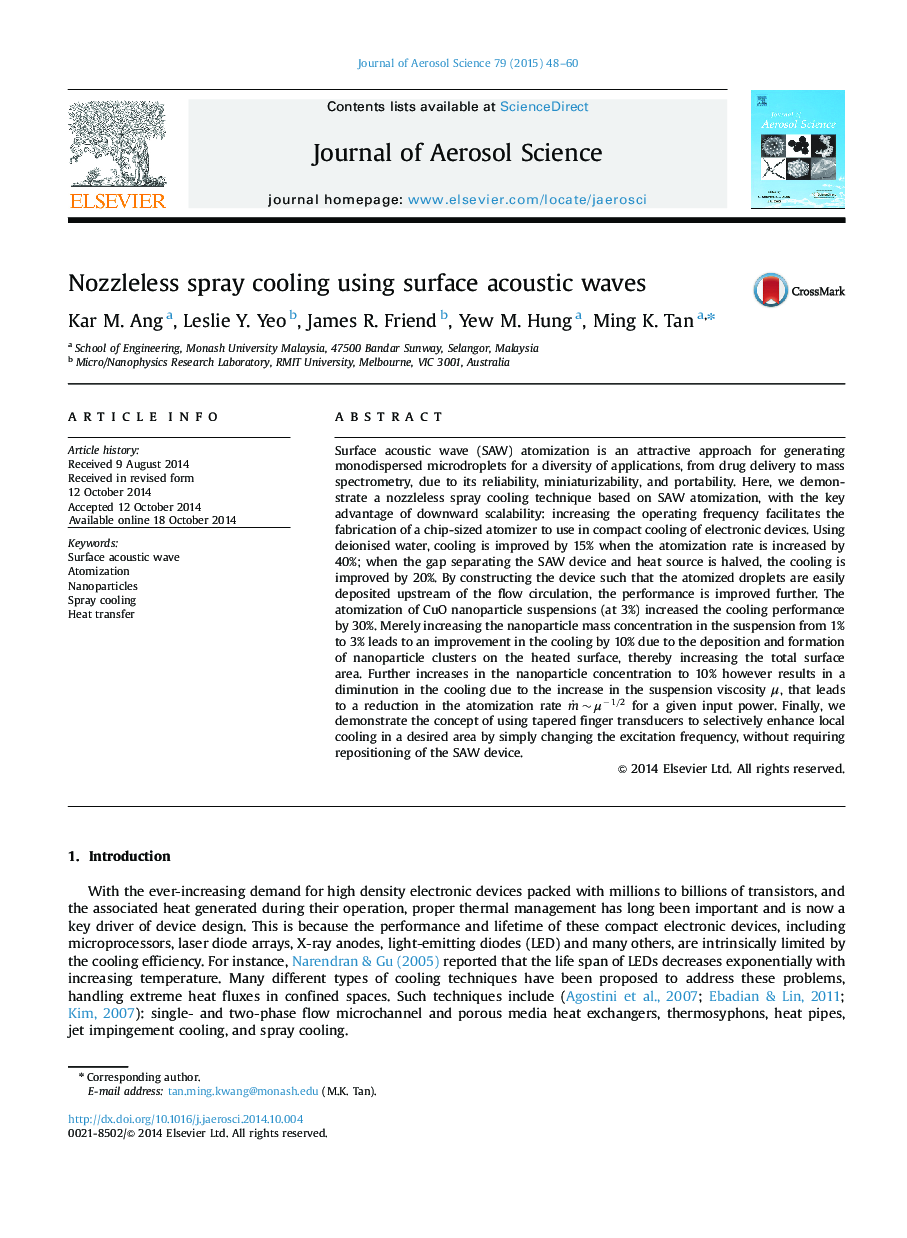| Article ID | Journal | Published Year | Pages | File Type |
|---|---|---|---|---|
| 4452295 | Journal of Aerosol Science | 2015 | 13 Pages |
•Anozzleless spray cooling technique based on SAW atomization has been demonstrated.•The atomization of CuO nanoparticle suspensions increased the cooling performance.•Increasing the nanoparticle mass concentration (less than 3%) leads to an improvement in the cooling.•Further increases in the nanoparticle concentration (more than 3%) results in a diminution in the cooling.•The concept of using tapered finger transducers to selectively enhance local cooling in a desired area also demonstrated.
Surface acoustic wave (SAW) atomization is an attractive approach for generating monodispersed microdroplets for a diversity of applications, from drug delivery to mass spectrometry, due to its reliability, miniaturizability, and portability. Here, we demonstrate a nozzleless spray cooling technique based on SAW atomization, with the key advantage of downward scalability: increasing the operating frequency facilitates the fabrication of a chip-sized atomizer to use in compact cooling of electronic devices. Using deionised water, cooling is improved by 15% when the atomization rate is increased by 40%; when the gap separating the SAW device and heat source is halved, the cooling is improved by 20%. By constructing the device such that the atomized droplets are easily deposited upstream of the flow circulation, the performance is improved further. The atomization of CuO nanoparticle suspensions (at 3%) increased the cooling performance by 30%. Merely increasing the nanoparticle mass concentration in the suspension from 1% to 3% leads to an improvement in the cooling by 10% due to the deposition and formation of nanoparticle clusters on the heated surface, thereby increasing the total surface area. Further increases in the nanoparticle concentration to 10% however results in a diminution in the cooling due to the increase in the suspension viscosity μ , that leads to a reduction in the atomization rate ṁ~μ−1/2 for a given input power. Finally, we demonstrate the concept of using tapered finger transducers to selectively enhance local cooling in a desired area by simply changing the excitation frequency, without requiring repositioning of the SAW device.
